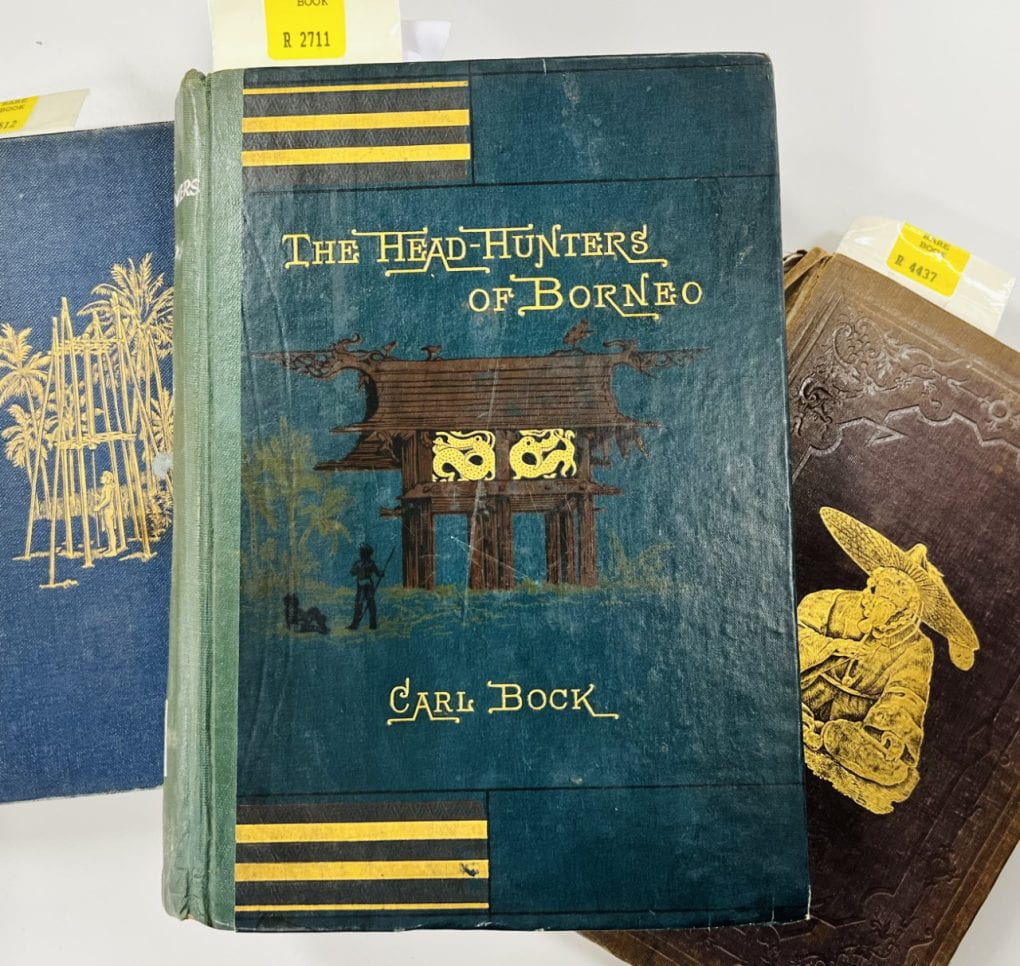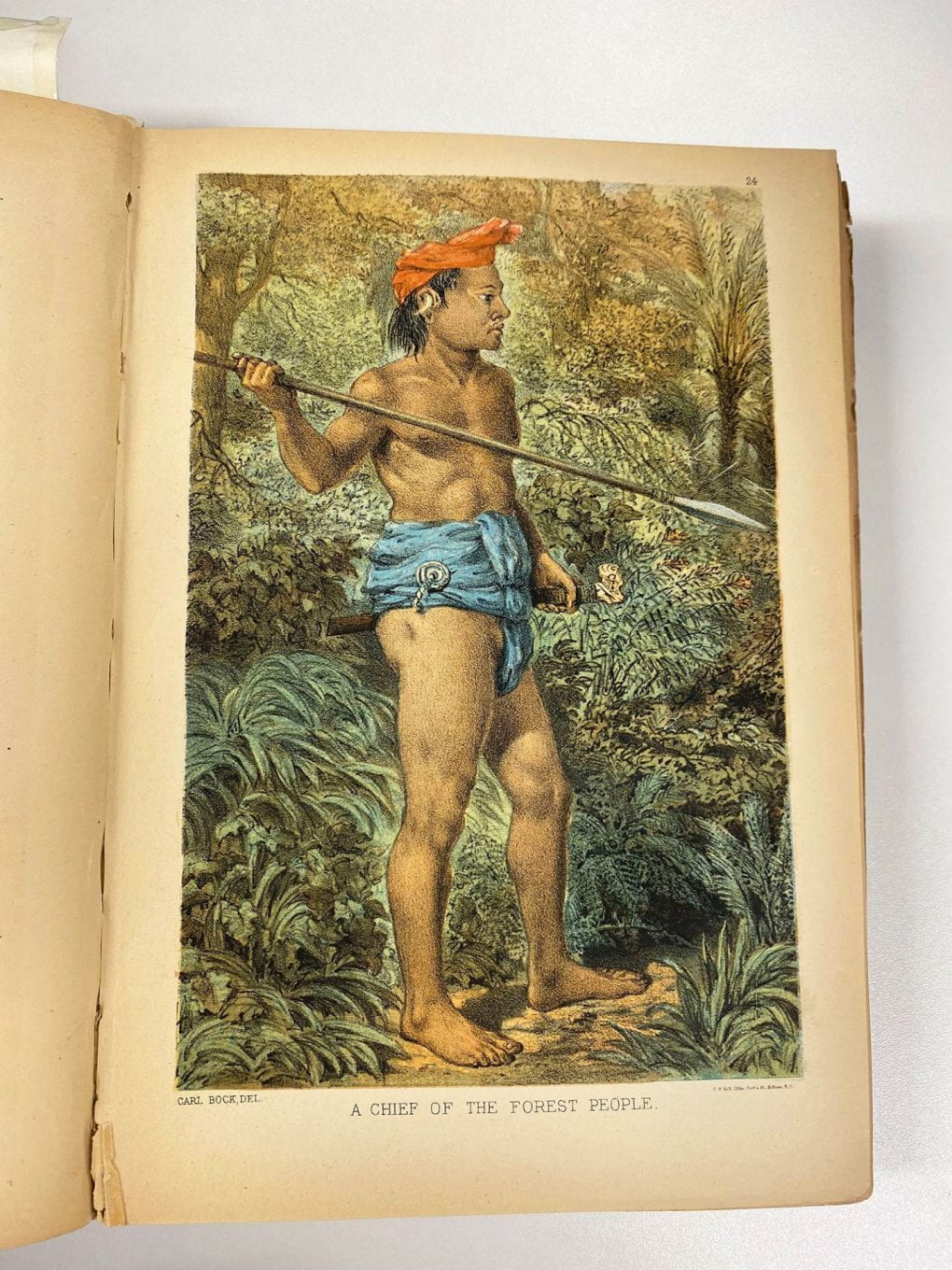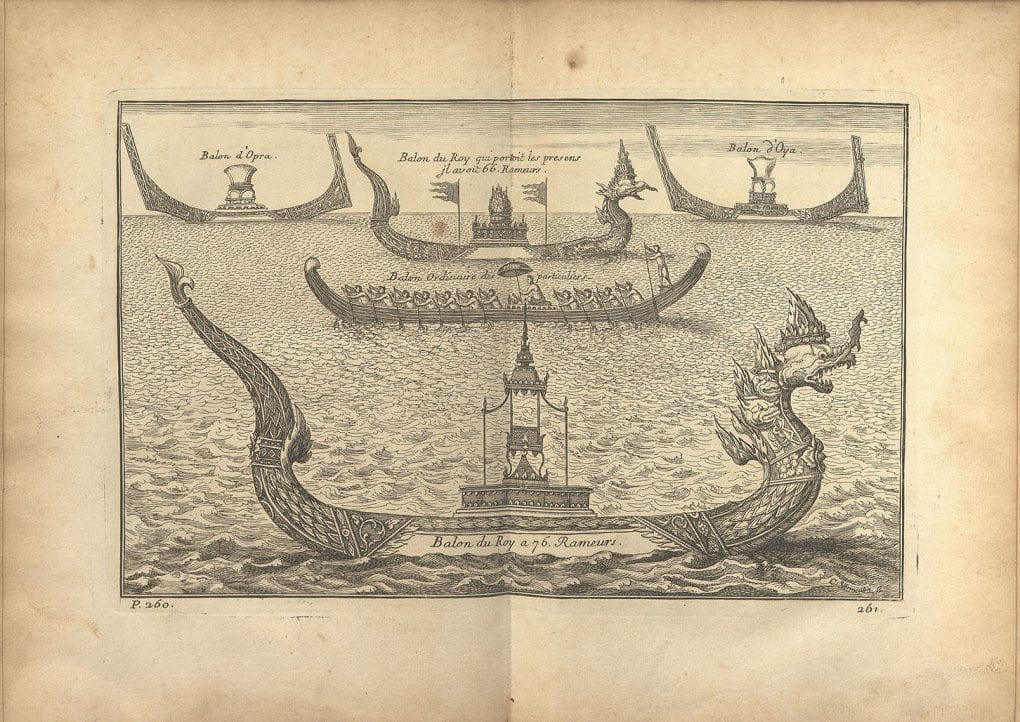Hello from the Collections Team,
Hope everyone enjoyed reading the post on Exhibition: Evolution of NUS Libraries by our team. It is less than four months before the year draws to an end, and we have been busy preparing for a new exhibition to complement the Singapore/Malaysia Collection on the fifth floor of the NUS Central Library.
Titled Early Voyages and Travels in Southeast Asia, the display features over eight rare books on sea voyages from our archives. According to the Cambridge dictionary, the term “sea voyages” refers to a long journey, especially by ship. The history of sea voyages is expansive and can be traced back thousands of years to the ancient world. Methods to navigate open seas differ from culture to culture. Expeditions were typically fuelled by interests to establish trade routes which later paved the way for colonisation, increase the spread of religion, acquire new scientific knowledge and so forth.
Carefully selected by Gandhimathy Durairaj (Senior Librarian and Head of Collections), these books have never been on display previously. Do you know that we have an extensive collection of books on sea voyages? This exhibition features books on sea voyages in Southeast Asia from the 1600s to mid-1900s, and comprises early observations of the region’s ethnography and biodiversity among other things. This display also aims to accentuate diverse but inter-related issues in historical perspectives such as archipelagic spaces and nations; interrelation between people and natural environment; and so on.

Snapshot of books on display
A few weeks ago, I noticed that the beautiful leather and cloth-bound books, many of them with gold inscriptions had been placed on a trolley parked in front of a colleague’s desk. I must confess that I was drawn to them like a moth to a flame. The first book that I picked up, Around Tonkin and Siam, offers readers a glimpse of Prince Henri of Orléans view of Tonkin, Laos, and Siam in 1892. The author started his journey from Paris in 1891 and intended to investigate lower Tonkin before making a brief pitstop in Laos and Thailand. This volume provides the reader with a detailed, chronological recounting of his journey. For instance, chapter one elaborates on the French colonialist’s arrival in Hong Kong – A Visit to Canton – Its Trade – The Chinese Town – The Bateaux à Fleurs – Return to Hong Kong – Experiments with Tonkin Coal.

Illustration featuring entrance to Canton River
The opening paragraph reads as follows, “The Sidney has just cast anchor in the port of Hong-Kong, and facing us, enveloped us in a mantle of mist which seems as if it had been imported from England, the tall houses rise one above the other upon the hillside, which is scored as with a broad streak by the line of the funicular railway”. I am not sure how you feel but this very sentence took me a million miles away. I could imagine a colonial gentleman observing his surroundings as the ship docked at the port. I guess what they say about books is so true in this case.
“Reading is dreaming. Reading is entering a world of imagination shared between reader and author. Reading is getting beyond the words to the story or meaning underneath.” ~ Paul Kropp

Snapshot of publication, The Head-hunters of Borneo: A Narrative of Travel up the Mahakkam and Down the Barito; also, Journeyings in Sumatra
You may also be interested in The Head-hunters of Borneo: A Narrative of Travel up the Mahakkam and Down the Barito; also, Journeyings in Sumatra. As the Dutch empire was keen to discover more about the rather unknown part of its empire, Carl Bock (Norwegian government official, author, naturalist and explorer) was charged by his Excellency Van Lansberge, Governor-General of the Dutch Indies with the mission to explore Borneo in 1878. Bock completed his journey through several dangerous and troublesome Dyak tribes and authored a rather interesting travel book on the native races of the interior, and the biodiversity found in that part of the island.

Beautiful illustration of the Chief of the Forest People
The lavish colour plates, maps, and other illustrations in the volume is fascinating. It is a testament that the author was a rather clever artist. All of the drawings were done carefully on the spot and are the main highlight of the book. Did you know that the houses, villages, and forest scenes are all true to nature, and the same may be said of the numerous portraits of the Dyaks and illustrations of their domestic life and customs? Although many of the figures are life-like, some of the features of the natives have been Europeanised slightly. On further reflection, one can really hold Bock responsible as his artistic foundation was based on the European methodologies.
Lastly, I ended picking up, The Voyage to Siam, made by the Jesuit Fathers sent by the king to the Indies and to China: with their astronomical observations and their remarks about the physical, geographical, hydrographical and historical attributes of the countries they observed. This travelogue was authored by a French Jesuit missionary and mathematician Guy Tachard, otherwise known as Père Tachard from the 17th century. King Louis XIV dispatched Guy and five other Jesuit scholars to Siam to gather scientific information. Their journey began at Brest and continued at the Cape of Good Hope (with a very detailed chapter on the indigenous people, wildlife, etc), Java, Batavia and finally Siam. Upon his return to France, Guy was given the title of, “ambassador of the King of Siam”.

One of the many illustrations capturing the Thai culture featured in the travelogue
As I reflect on the content of the books, part of me wonder if the locals/natives would agree with the observations of the colonialists. I am aware that the NUS Libraries Collection has books or material authored by the natives/locals about their own culture and the rich flora and fauna found in the region. However, it may not be of the same period. Nonetheless, it would be interesting to read the literature as we will get a chance to discover both perspectives. Do watch out for our next Blogspot article as it will provide you with an in-depth view of one of the rare books on display. With that, I will end off here and wish everyone a great week ahead!
Cheers,
Poonam

